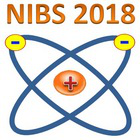Speaker
Dr
Federica Bonomo
(Max-Planck-Institut für Plasmaphysik)
Description
The modular concept of the ITER Negative Beam Ion (NBI) source has been replicated in the ELISE test facility with half of the source size in the vertical direction; thus producing a large beam of about $1\,m\,×\,1\,m$. The target of ELISE is to achieve simultaneously the ITER NBI parameters in terms of negative ion extracted current (in H and D), pulse duration and ratio of co-extracted electrons below $1$ at a source filling pressure of $0.3$ Pa. Due to limitations of the HV power supply, only 10 s of beam extraction about every $150\,$s can be applied, with a maximum total voltage of $60$ kV. This implies that ITER relevant beam divergences cannot be achieved; however, trends and behavior of the beam divergence in ELISE as well as beam uniformity are of great importance for ITER. The beam in ELISE is characterized by means of various diagnostics: the currents in the grid system are electrically measured and provide the total extracted negative ion current as well as information of the beam losses separately measured in the two segments of the extraction and grounded grids; the Beam Emission Spectroscopy (BES) diagnostic gives information on the beam intensity and divergence (vertical and horizontal profiles); Infra-red (IR) analysis of the diagnostic calorimeter provides a 2D map of the total beam power and, consequently, the accelerated current.
The spatial resolution of the diagnostics allows for identifying and characterizing in intensity and divergence the beam segments associated to the two grid segments. The beam evolution in the segments during the Cs conditioning process (i.e. Cs evaporation in the source in order to move from the volume production of negative ions to the surface production) has allowed for optimizing the conditioning, being the beam itself an indirect measurement of the status of the negative ion production. During the Cs conditioning, the presence of two peaks in the main Doppler shifted peak in the BES spectra have been observed and characterized. When a good and stable Cs conditioning phase is obtained, beam uniformity optimization can be investigated in order to achieve the beam ITER target requirements in terms of uniformity, i.e. better than $90 \%$.
Primary author
Dr
Federica Bonomo
(Max-Planck-Institut für Plasmaphysik)
Co-authors
Dr
Dirk Wünderlich
(Max-Planck-Institut für Plasmaphysik)
Ms
Isabella Mario
(Max-Planck-Institut für Plasmaphysik)
Prof.
Ursel Fantz
(Max-Planck-Institut für Plasmaphysik)

